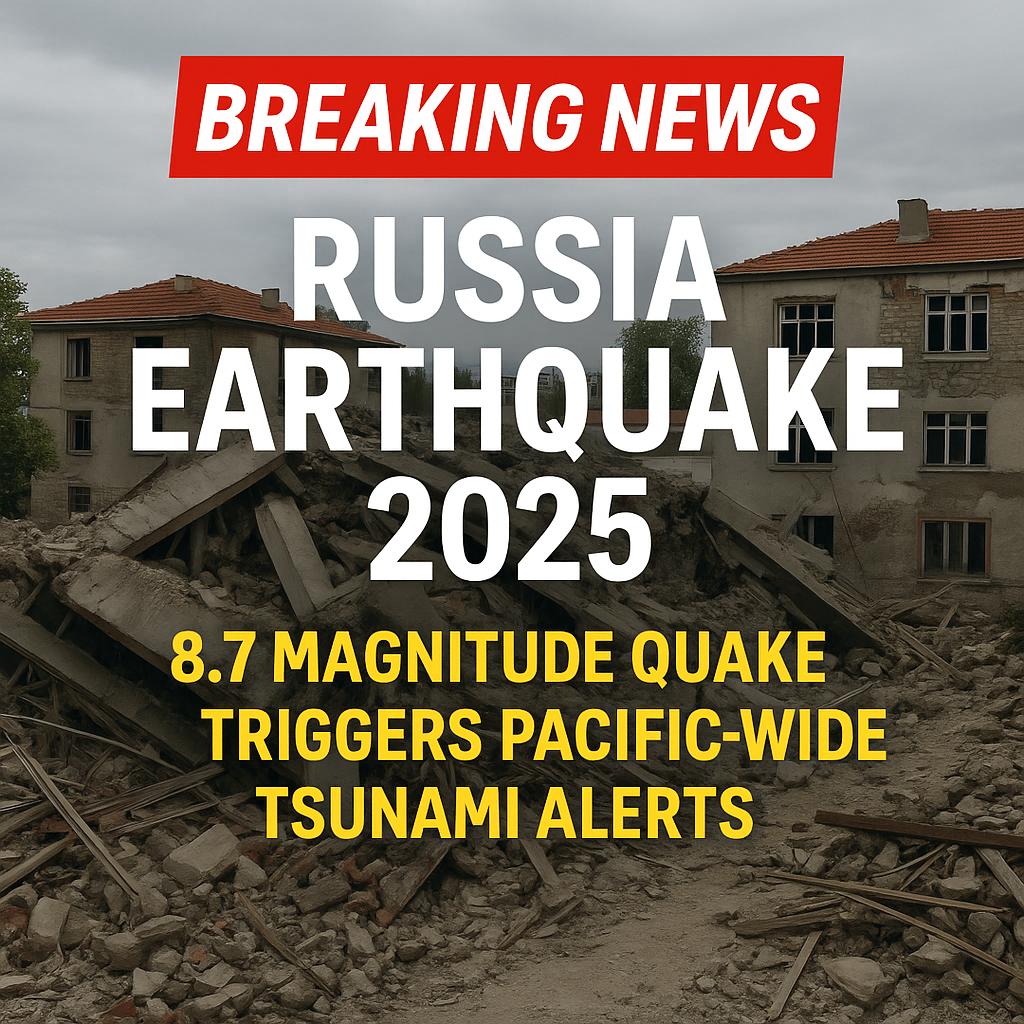
Introduction
On July 29–30, 2025, a powerful magnitude 8.7 earthquake struck off the coast of Russia’s Kamchatka Peninsula, triggering tsunami alerts and evacuations across multiple Pacific nations. Countries including Japan, Alaska, Hawaii, and Canada were placed on high alert as seismic waves spread across the region. The quake is now considered one of the most significant in modern times, both in strength and geographical impact.
Earthquake Epicenter and Magnitude
- Epicenter: 125 km southeast of Petropavlovsk-Kamchatsky, Russia
- Depth: Approximately 19.3 kilometers
- Magnitude: Between 8.7 and 8.8, depending on sources
This shallow-depth earthquake occurred in the highly active Kuril-Kamchatka subduction zone, increasing the risk of widespread damage and ocean displacement.
Tsunami Alerts and Global Response
Following the initial quake, the Pacific Tsunami Warning Center (PTWC) issued warnings for:
- Japan – especially Hokkaido and northeastern coasts
- United States – including Alaska, Hawaii, and the West Coast
- Canada – particularly British Columbia
- New Zealand, Guam, and Pacific Islands
Japan's Meteorological Agency reported wave heights between 1 and 3 meters, while Kamchatka saw waves up to 4 meters, flooding several low-lying coastal towns.
Precautionary evacuations were conducted in Hawaii, parts of Japan, and coastal Russia. Staff at the Fukushima nuclear power plant were temporarily evacuated, though no damage was reported.
Local Damage and Safety Measures
- Power outages were reported in Kamchatka’s capital, Petropavlovsk-Kamchatsky
- Mobile networks experienced brief service interruptions
- Several minor injuries were reported due to falling debris
Thanks to effective warning systems, major casualties were avoided, but authorities continue to monitor potential aftershocks and secondary wave surges.
Aftershocks and Ongoing Seismic Activity
Several aftershocks were recorded, some reaching magnitudes above 7.0. Geological experts warned that the area may continue experiencing seismic activity for several days.
Organizations like the USGS and Japan Meteorological Agency are closely tracking the situation. Local governments in affected countries have issued advisories urging citizens to remain cautious and stay informed via official alerts.
Historical Context and Comparison
This earthquake is being compared to other significant seismic events, such as:
- 2010 Chile Earthquake – Magnitude 8.8
- 2011 Tōhoku Earthquake – Magnitude 9.0
- 1952 Kamchatka Quake – Magnitude 9.0
Experts note that the 2025 event ranks among the top 10 strongest earthquakes ever recorded and had the potential to cause catastrophic tsunamis across the Pacific.
Government and Public Response
Emergency management authorities across the Pacific Rim initiated emergency response protocols. In Japan and Hawaii, tsunami sirens were activated and public shelters opened. No major nuclear facility damage has been reported.
Governments are urging citizens in coastal areas to review evacuation plans and remain alert as the region stabilizes.
Event Summary
| Attribute | Details |
|---|---|
| Date | July 29–30, 2025 |
| Magnitude | 8.7–8.8 |
| Epicenter | Off the Kamchatka Peninsula, Russia |
| Depth | 19.3 km |
| Regions Affected | Russia, Japan, Alaska, Hawaii, Canada |
| Confirmed Tsunami | Yes, waves up to 4 meters in Russia |
| Evacuations | Hawaii, Japan, Kamchatka, others |
Conclusion
The 2025 Kamchatka earthquake is a powerful reminder of the unpredictability of nature and the importance of preparedness. Though the initial threat appears to be under control, continued vigilance is necessary as aftershocks remain possible. Global cooperation in monitoring seismic zones is key to protecting lives and infrastructure in such critical situations.










